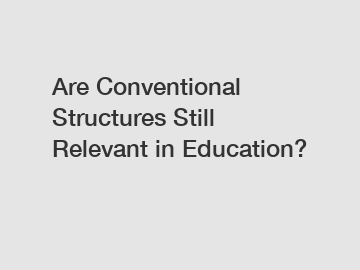Are Conventional Structures Still Relevant in Education?
Are Conventional Structures Still Relevant in Education?
Conventional structures have long been a staple of the education system, providing a framework for how learning is organized and delivered. However, in a rapidly evolving world where technology is changing the way we live and work, the relevance of these traditional structures is increasingly being called into question.
One of the key arguments for maintaining conventional structures in education is the need for consistency and standardization. By adhering to established frameworks, schools can ensure that students are receiving a consistent level of education regardless of their location or background. This helps to maintain a level playing field and ensures that all students are being held to the same standards.

Additionally, conventional structures provide a sense of familiarity and routine for both students and teachers. They offer a predictable schedule and clear expectations, which can help students feel more comfortable and secure in their learning environments. This can be especially important for younger students who thrive on routine and structure.
However, the rapid pace of technological advancement is challenging the relevance of these conventional structures. With the rise of online learning platforms, personalized learning tools, and other technological innovations, the one-size-fits-all approach of traditional education is becoming increasingly outdated. Students today have access to a wealth of information at their fingertips, and they often learn best through interactive and individualized experiences.
As a result, many educators and experts are advocating for a shift towards more flexible and personalized approaches to education. This could involve incorporating more project-based learning, allowing students to pursue their interests and passions, and leveraging technology to create more dynamic and interactive learning experiences.
While maintaining some degree of conventional structure is important for ensuring consistency and accountability in education, it is clear that there is a need for greater flexibility and innovation in the way we approach teaching and learning. By embracing new technologies and pedagogical approaches, we can better prepare students for the challenges of the 21st century and equip them with the skills they need to succeed in an increasingly complex and interconnected world.
In conclusion, while conventional structures still have some relevance in education, there is a growing recognition that they are in need of a significant overhaul. By embracing new technologies and approaches to learning, we can create more engaging and effective educational experiences that better prepare students for the demands of the future. It is time to challenge the status quo and reimagine the way we educate our youth for a rapidly changing world.
For more information, please visit steel truss manufacturers, Aluminum Space Frame, difference between truss and frame.
160
0
0

Comments
All Comments (0)